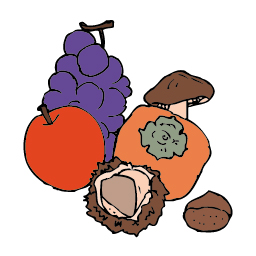[October Peace
]
When does she go back to school?
During the foreshortened summer holidays, our youngest girl was depressed about an email
she received from the student affairs office.
Quarantine during the last five months has been tough, especially for freshmen starting new lives on campuses far from home.
A newspaper article recently commented on the number of freshmen suffering from mental health problems
due to being isolated all day long unable to interact with friends.
Because of the continuing quarantine compounded by financial problems brought on by the pandemic, some students have left school.
Corona closed all the schools last March, but since June, more than 96% of grade schools, middle schools
and senior-highs have since reopened with staggered attendance. University students, however, have been left behind.
Even though the new semester starts in October, she'll be off campus until the end of March.
Except for first aid/C.P.R. sessions and anatomy dissections, most classes will be conducted online throughout the third and the fourth quarters.
I wonder how online schooling will change how students interact and conduct their after-class activities.
When it comes to our daughter, she has already found a way to enjoy off-campus activities.
Last May, she began working with a bilingual program called "High Schoolers Summer Seminar". The sessions were held via Zoom in August.
Every weekend, undergraduate and graduate students from across the globe got together to discuss liberal arts,
how to set up online forums, workshops and more. Because of these virtual meetings, she quickly learned how to handle IT apps;
Remo for web meetings, channels in Slack, Google classrooms with whiteboards and how to provide feedback/questionnaires for the audience.
Here comes the fall quarter now. Don't be afraid of facing a sea change, young lady.
(Kazuyo)
The NIK2-J Shiden-Kai was the Imperial Japanese Navy's state-of-the-art fighter,
competing for domination of the skies over Japan against late-war Allied planes.
One NIK2-J went down in the waters off Ainan, Ehime in 1945.
The sunken plane was miraculously found, salvaged, completely restored and placed on exhibition in 1979.
On the way home from Ainan, I stopped by my mother's house in Uwa.
I asked her what she thought of the young Japanese pilots who flew these planes and what they must have been thinking
in their final moments, just before they crashed their planes onto the decks of Allied ships.
She reflected, "The pilot must have worked up his bravery just prior to the final attack,
but probably cried for his mother at the very last moment."
Apparently something evoked her haunted memory of those turbulent times.
Another restored NIK2-J is on display at the Smithsonian Museum. When I visited there in 1991, I didn't really pay much attention to it.
But just the other day, the fighter displayed in Ainan opened my eyes.
It seemed to retain a certain dignity and all the weight of its 75-year-old history.
How highly was the pilot motivated to fly the mission from which he knew he would never return?
What crossed his mind at that last crucial moment before he crashed into the sea?
There are portraits of the elite pilots who flew and died on those last desperate missions.
They all look so young and courageous. To look at, these photos are heart-wrenching.
How could I send my sons, the same age as these young men, to fight and die in war? Never, ever!
My mother recalled, "When the war started, I was 5 and believed Japan would win.
Oh my, but I was frightened by the bombers flying over and air-raid warnings so much so that,
even now,I have a weird dream in which I've taken refuge in a dugout shelter. At age 9, on the day the war ended, I grabbed my treasure,
my favorite toy, and threw it in my emergency sack, where I kept a few decent articles of clothes.
I did this for fear the enemy would deprive me of all my things.
Sound absurd? At the time, I was seriously worried the Americans would steal all my things from me.
In time, the U.S. Occupation army was seen on the streets. One day a jeep was passing by. I hugged my little brother
lest they spot the Japanese flag badge sewn on his vest. I was only a child and believed that at some point we might all be taken prisoner.
I was very frightened, but at least none of my family was hurt, and that was something for which I was grateful."
Hopefully, despite some painful memories, my mother is enjoying an Indian summer, a time for more pleasant recollections now.
Today we can see Japan's last extant NIK2-J, now a symbol of eternal peace, at the Shiden-Kai Exhibition Hall in Ainan.
(Miwa N.)
|


